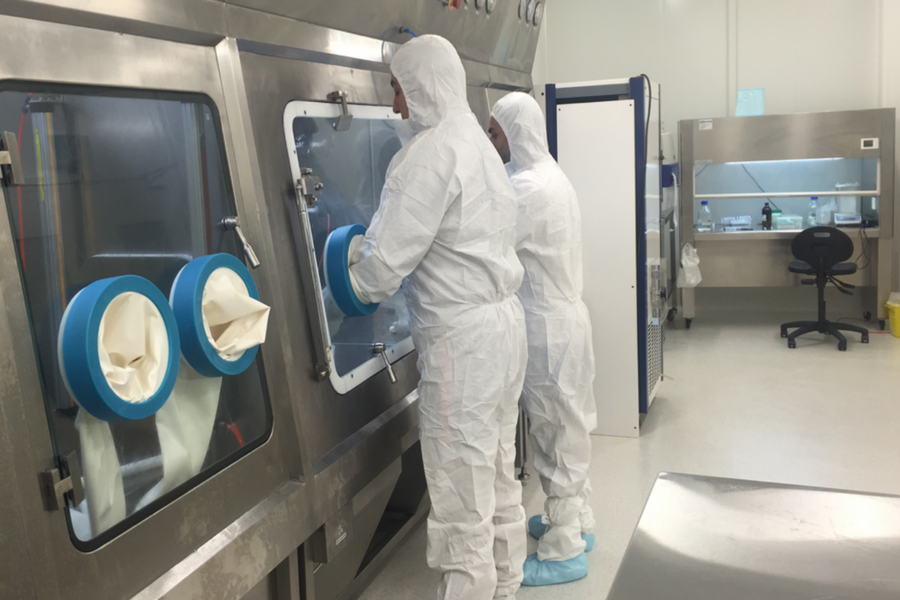Despite their usefulness, it’s a social norm to dislike dentists. The bottom line is that most prefer not to have another person poking metal objects around the inside of their mouth, particularly if said object is a drill.
At an even more uncomfortable end of the dentistry scale is tooth extraction, which often leads to more pain than discomfort.
Enter Trimph, an Australian biomedical startup working to commercialise a range of medical technologies, including its patented TrimphDent, a product to be used to accelerate the healing of hard and soft tissue post tooth extraction.
By quickly healing the damaged tissue, Trimph is ultimately intended to reduce the pain and discomfort felt after a tooth has been extracted, an “inherently traumatic procedure”, and reduce the need for a secondary operation used to tend to complications resulting from the initial extraction.
As Trimph’s cofounder Terence Abrams explained, the technology leverages the company’s “platform polymer technology”, which emerged from cofounder Ali Fathi’s PhD project at the University of Sydney.
Naturally, polymers, or large molecules, string together to make up natural materials such as wool, silk and rubber.
Engineering a synthetic polymer, Fathi’s PhD study suggested that the bone “glue” technology would be able to regenerate bone, cartilage, and connective tissue, meaning that although polymer is currently focused on treating damaged tissue underneath teeth, it could hold applications for a number of bone-related medical issues.
“The properties of this material can be tuned to treat a number of pathologies including osteoarthritis, bone defects and maxillofacial disorders. The material’s chemical and biological properties are entirely tuneable such that multiple therapeutic applications are possible from the platform technology,” explained Abrams.
After completing his university studies, Fathi partnered with Abrams to launch Trimph, patenting the polymer tech in the US and Europe and going on to establish an International Organisation for Standardisation (ISO) 13485 certified production facility, meaning the facility to produce the tech meets the strict global regulatory standards.
These facilities, of course, didn’t come for free, as Abrams explained the startup looked to a number of avenues over the last two years to raise capital.
To date, Trimph has raised $4.2 million from both public grants and private investment, $3.2 million in private funding, and $1 million from the Commonwealth’s Accelerating Commercialisation program. It has also received a MDF Special Grant, and is now also a portfolio company of Cicada Innovations.
The capital also helped the business progress towards its first “in man trial” or patient study for TrimphDent, which aims to identify effective methods of analysis to determine the effects of the technology.
Working with 10 patients in Perth, Abrams said he expects results to show the product does exactly what it’s intended to – accelerating the healing of soft tissue and bone resorption post tooth extraction.
“If successful [we have] plans to run a large, controlled study in order to register TrimphDent in the Europe and Australia,” he added.
To fund clinical trials and registration both locally and internationally, the startup is planning to raise $8 million over the next 1-2 years, as the business stands ready to transition its technology beyond dental and into the orthopaedic bone substitute market.
Describing how TrimphDent functions, Abrams said, “The technology is an injectable liquid that forms an adhesive hydrogel when administered. The phase change is due to the temperature responsive nature of the patented polymer.
“When applied to a dental defect such as an extraction socket the material is hydrophilic and able to mix with blood at the site to stabilise the clot. The hydrogel provides a scaffold for the natural repair process and is expected to promote the regeneration of bone and accelerate wound healing.”
Essentially, once injected, TrimphDent changes to an adhesive hydrogel thanks to a temperature response, which keeps the wound moist to protect it and promote efficient healing. Naturally, this makes a prosthetic tooth replacement simpler, and likely less painful post-procedure, to administer.
Currently, Abrams said products used for tooth extraction and replacement procedures are difficult to administer, requiring “surgical expertise”, and fail to promote hard and soft tissue wound healing.
“TrimphDent is easy to use and provides favourable clinical outcomes for patients, these differentiating features will allow the company to promote the use of the product among general dentist rather specialised surgeons,” he added.
Leveraging the data from the clinical trials, Abrams said the Trimph will look to generate additional corporate interest and investment other high growth markets.
“This model mitigates risk to the company and potential investors prior to embarking on costly clinical development and facilitates dynamic transition to high growth sectors,” he said.
Source: Supplied.




















Trending
Daily startup news and insights, delivered to your inbox.